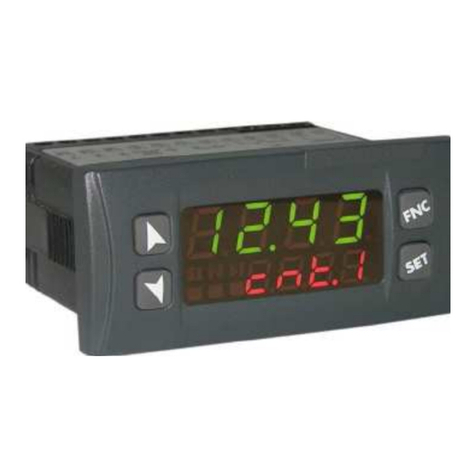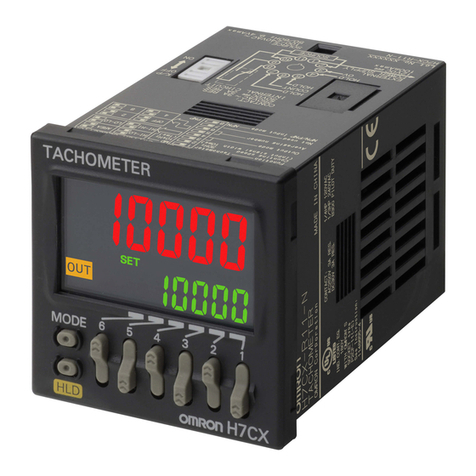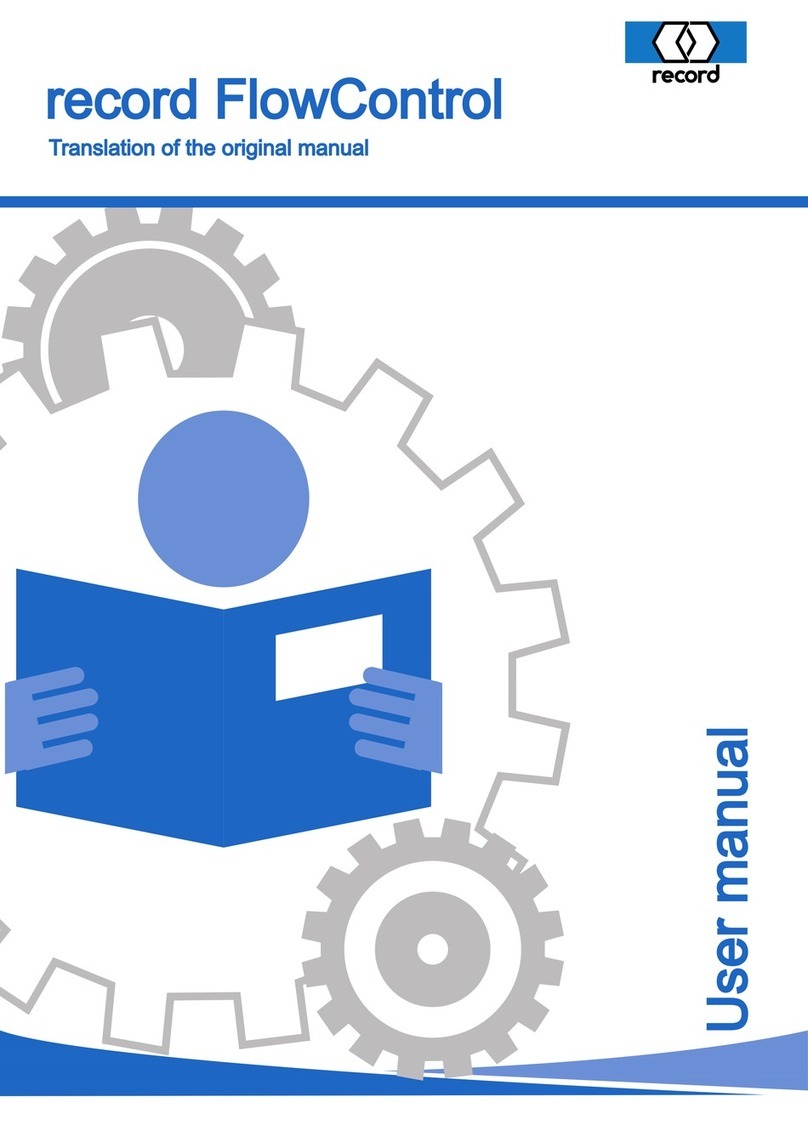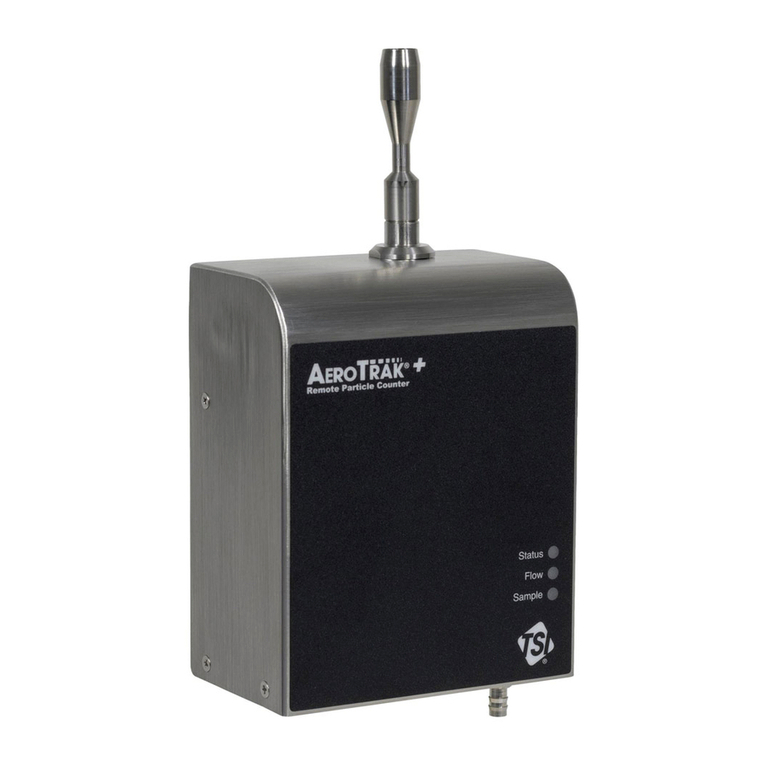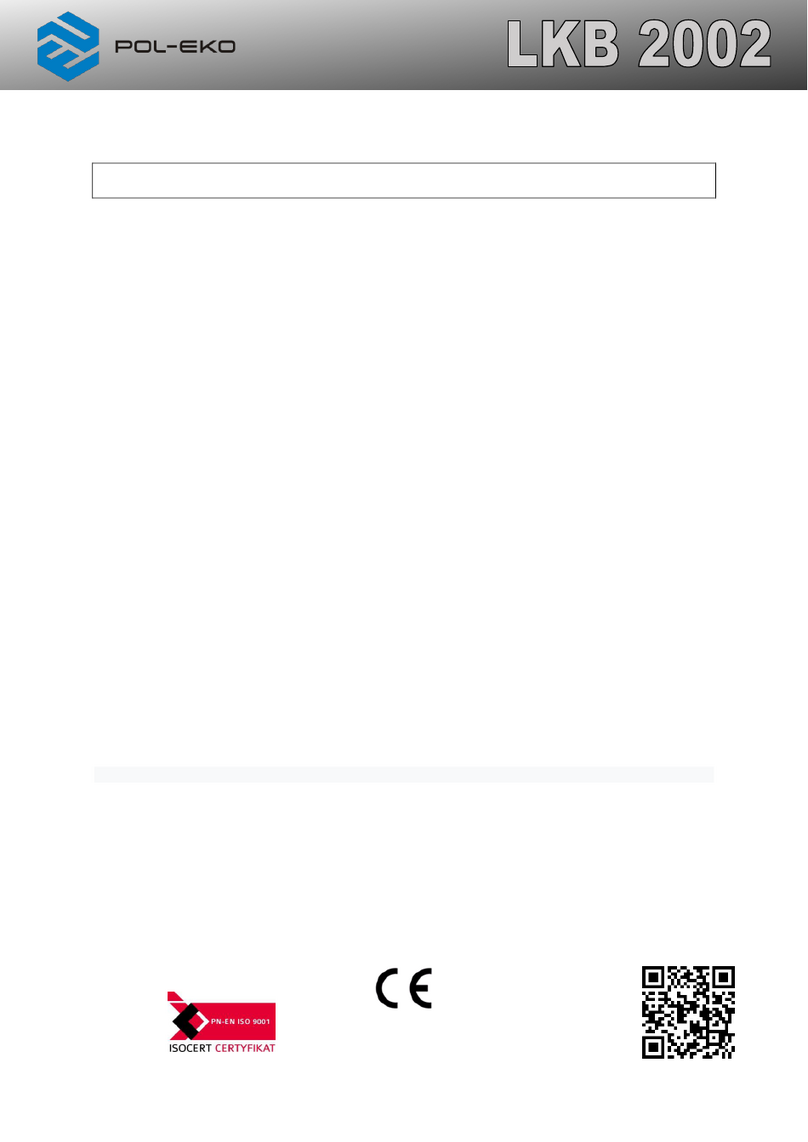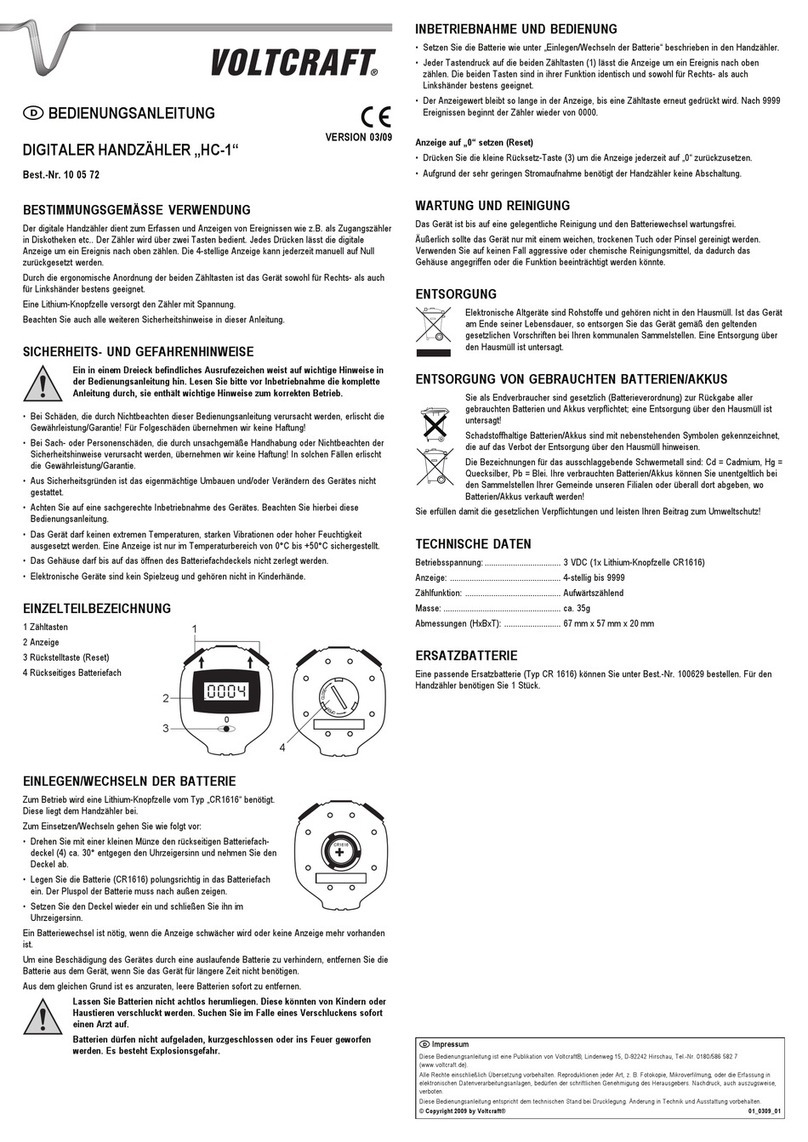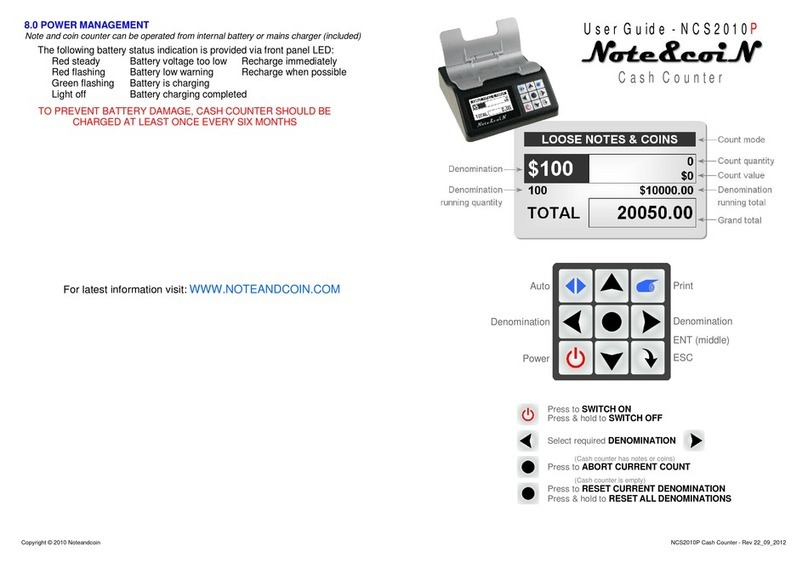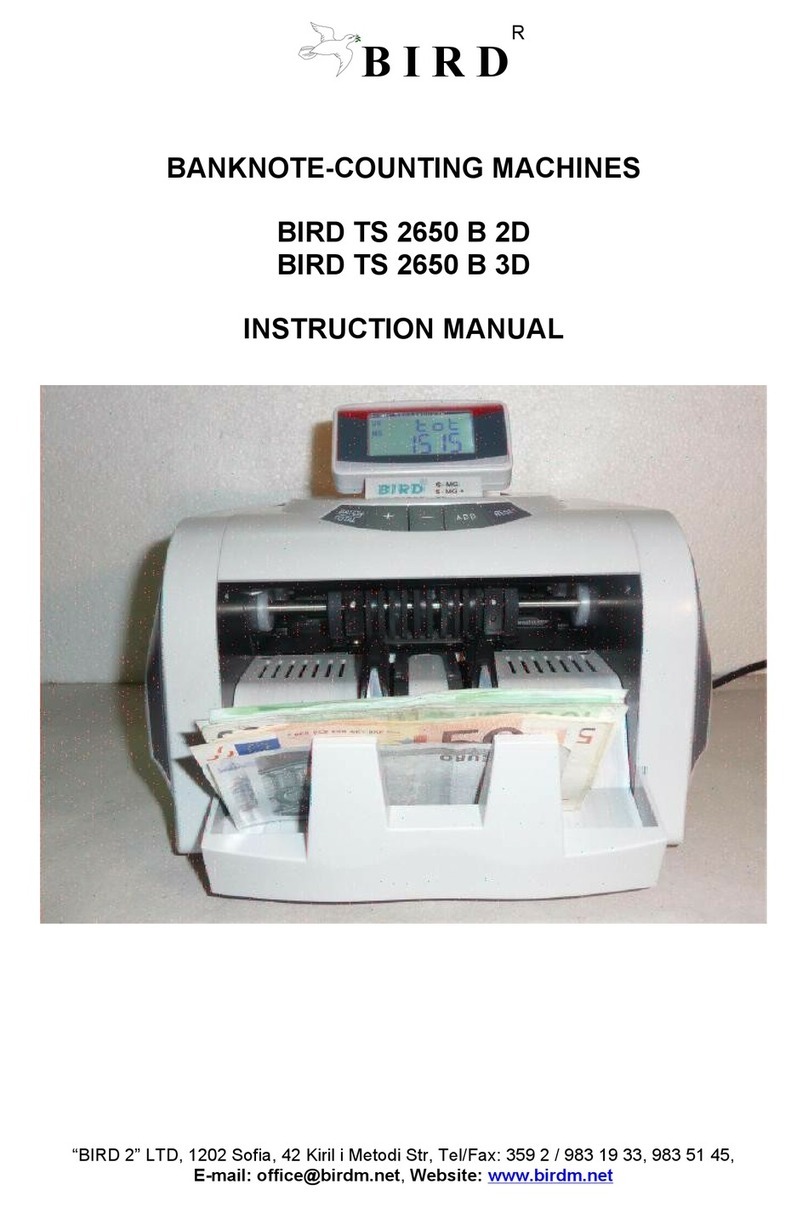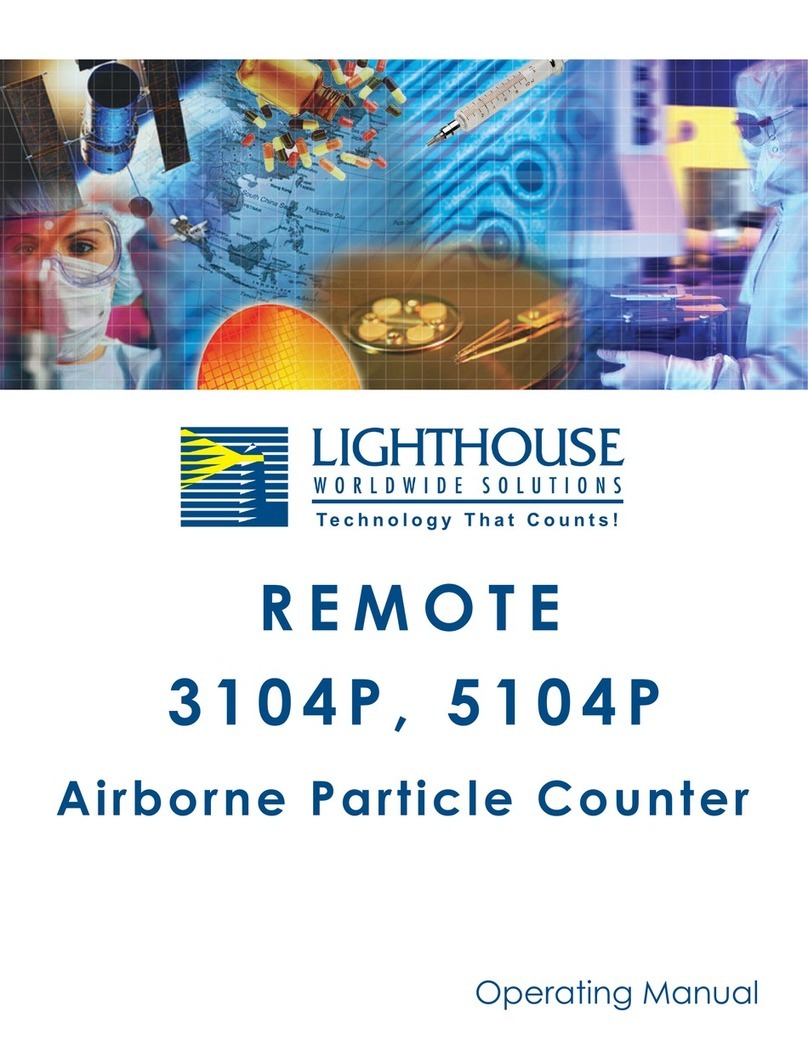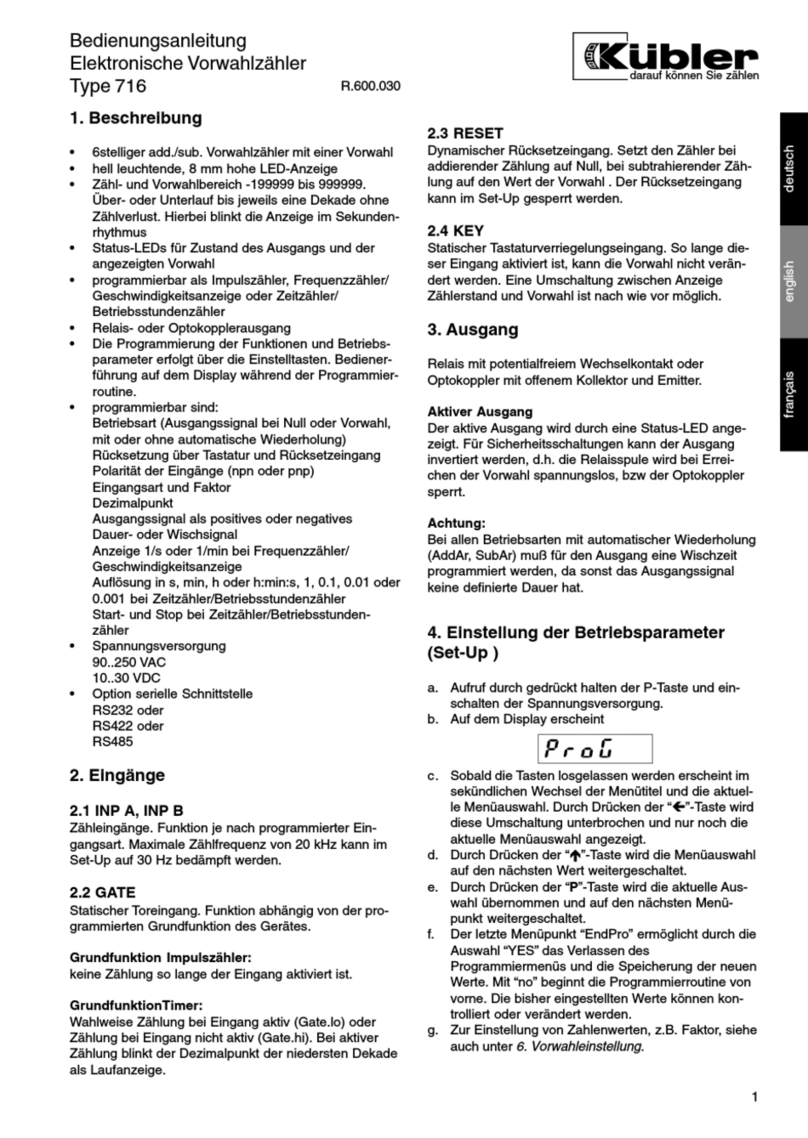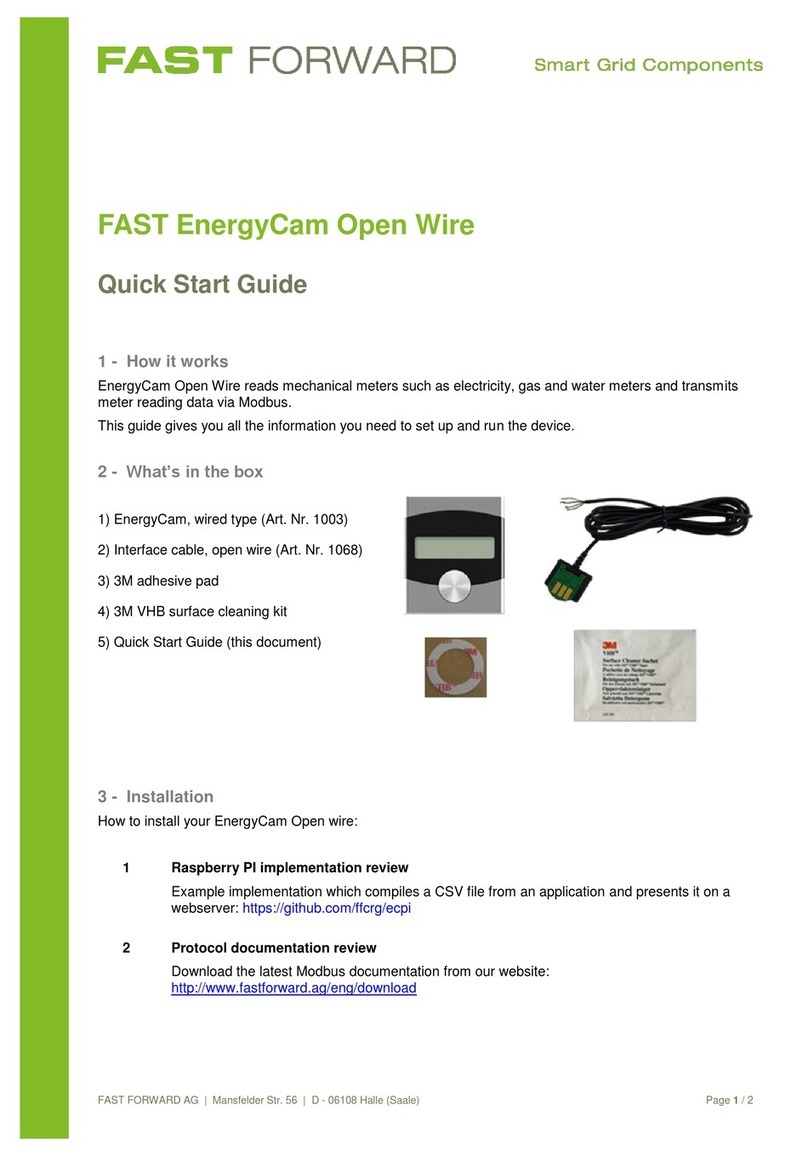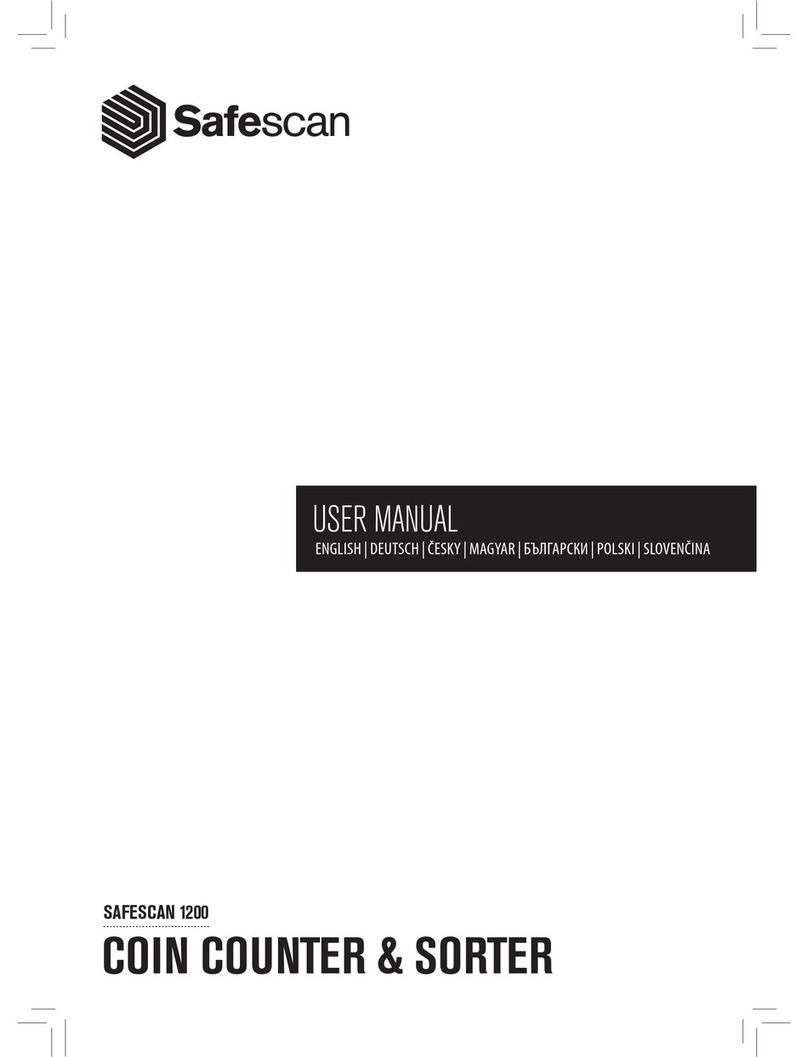Glas Craft Probler P2 User manual

5845 WEST 82ND STREET
INDIANAPOLIS, INDIANA
46278 U.S.A.
Phone (317) 875-5592
Fax (317) 875-5456
Email [email protected]
Web www.glascraft.com
Probler P2
Delayed Air Purge /
Dispense Counter
Guardian Series Options
USER MANUAL
PATENT PENDING

Introduction
About This Manual.................................................................................................................................................... 1
Parts & Illustrations
Standard & Optional Equipment ............................................................................................................................... 2
Compnent Features ................................................................................................................................................. 3
23996-00 Delayed Air Purge Assembly .................................................................................................................... 4
23997-00 Dispense Counter Assembly .................................................................................................................... 7
Safety
Urethane Safe Handling and Use of Foam Equipment ............................................................................................ 10
Installation
Optional Guardian Mount Installation ...................................................................................................................... 14
Delayed Air Purge Gun Installation ......................................................................................................................... 15
Delayed Air Purge Installation ................................................................................................................................. 17
Dispense Counter Gun Installation ......................................................................................................................... 19
Dispense Counter Installation ................................................................................................................................. 20
Operation
Initial Start-up Procedures ........................................................................................................................................ 24
Notes .......................................................................................................................................... 25
Limited Warranty Policy ........................................................................................................... 27
Technical Assistance ................................................................................................................ 28
For Your Reference ....................................................................................INSIDE BACK COVER
Table Of Contents

Introduction
About This Manual
Before operating, maintaining or servicing any
GlasCraft system, read and understand all of
the technical and safety literature provided with
GlasCraft products. If you do not have the prop-
er or related manuals and safety literature for
your GlasCraft system, contact your GlasCraft
distributor or GlasCraft, Inc.
In this GlasCraft technical and safety publica-
tion, the following advisories will be provided
where appropriate:
NOTE
Is information about the procedure in progress.
CAUTION
Is imperative information about equipment
protection.
WARNING
Is imperative information about personal safety.
The information in this document is intended
only to indicate the components and their normal
working relationship typical use. Each assembly
should be directed by a GlasCraft distributor or
made from the GlasCraft assembly instructions
provided.
This manual provides information for the assem-
bly, operation, maintenance and service of this
GlasCraft product as used in a typical congu-
ration. While it lists standard specications and
procedures, some deviations may be found.
In order to provide our users with the most up-
to-date technology possible, we are constantly
seeking to improve products. If technological
change occurs after a product is on the market,
we will implement that technology in future pro-
duction and, if practical, make it available to cur-
rent users as a retrot, up-date or supplement.
If you nd some discrepancy between your unit
and the available documentation, contact your
GlasCraft distributor to resolve the difference.
GlasCraft, Inc. reserves the right to change or
modify this product as it deems necessary.
Careful study and continued use of this manual
will provide a better understanding of the equip-
ment and process, resulting in more efcient
operation, longer trouble-free service and faster,
easier troubleshooting.
1

Parts & Illustrations
2
Standard Equipment
23996-00 DELAYED AIR PURGE ASSEMBLY
GC-1409 USER MANUAL
Model - Delayed Air Purge
Standard Equipment
23997-00 DISPENSE COUNTER
GC-1409 USER MANUAL
Model - Dispense Counter
Optional Equipment
23949-00 GUARDIAN SERIES MOUNTING BRACKET KIT
Mounting Options

Component Features
3
DELAYED AIR PURGE FEATURES
The control box receives a signal from the gun, once the signal is received the air purge is shut off via the Air Purge
control Valve (APCV), this valve is held in with the Delay Spool Valve (DSV). When the trigger is released the gun sign-
nal is cancelled to the DSV, the DSV then begins to count down to reset mode, once complete the APCV is reset and
air purge resumes.
The DSV is adjustable up to 15 seconds of delay. Factory set point is 2 seconds. To adjust the time delay of the DSV,
remove the plug #7279-09 from cover. Use a small at head screw driver, turn clock wise to increase delay time, coun-
ter clock wise to decrease delay.
The operator is responsible for recognizing the air purge delay time verses gel time of the materials being processed
with this equipment to ensure the gun does not prematurely set up. The Red eye on the front panel indicates when the
APCV is open, allowing air purge to the gun. The on/off switch will by-pass the signal air to the DSV, allowing the gun
to be operated normally with out the delay action of air purge.
DISPENSE COUNTER FEATURES
The control box receives a signal when the gun trigger is activated, to activate the timer, the timer counter receives sig-
nal from the change over switches. Pneumatic drive systems use a 3 way check valve and receive signal from both up-
per and lower switches, making the timer a “stroke counter”. Hydraulic drive systems use a single signal, typically to
the lower signal switch, making the timer a “cycle counter”.
When the predetermined count is reached the timer activates the bimba cylinder in the back of the gun to overcome
the trigger at the gun, the operator will need to recognize this “feel” of the trigger and release the trigger.
When the gun trigger is released the signal air is cancelled to a delay spool valve (DSV) located in box assembly.
The DSV delays the reset of the counter for 3 seconds.
The timer will reset to the set point and cancel the air to the actuation cylinder.
The on/off switch will by-pass the counter signal allowing the system to operated independent of the counter.
COUNTER CALCULATIONS
Stroke output = .021 gallon
Cycle output = .042 gallons

23996-00 Delayed Air Purge Assembly
4
REVISION A

23996-00 Delayed Air Purge Assembly
5
REVISON A

6
REVISION A
23996-00 Delayed Air Purge Parts List
Part
Number Description Qty.
11021-22 PIPE PLUG 1
1880-00 HOSE FITTING 2
19881-00 PLUG FITTING 2
20735-01 ELBOW FITTING 2
20750-00 SWIVEL TEE 1
20796-02 FITTING 1
21660-00 CONTROL VALVE 1
22205-00 “L” FITTING 2
22211-00 SPOOL VALVE 1
22212-01 BULKHEAD FITTING 1
22212-02 BULKHEAD FITTING 2
22218-00 PUSH-ON HOSE FITTING 9
22230-00 REGULATOR FILTER 1
22237-00 HEX STANDOFF 2
22240-00 VALVE MOUNTING PLATE 1
22242-00 PRESSURE INDICATOR 1
22273-00 DELAY VALVE 1
22706-16 SCREW 4
23947-00 DELAYED AIR PURGE KIT 1
23993-00 DELAY/TIMER BOX 1
23995-00 DELAY BOX COVER 1
7279-10 SNAP-IN HOLE PLUG 1
7279-11 SNAP-IN HOLE PLUG 1
7730-12F SCREW 2
8115-02 FITTING 2
ISD-142 SOLVENT POT GAUGE 1

23997-00 Dispense Counter Assembly
7
REVISION A

8
REVISION A
23997-00 Dispense Counter Assembly

9
REVISION A
23997-00 Dispense Counter Parts List
Part
Number Description Qty.
10080-03 BARB HOSE FITTING 1
11021-22 PIPE PLUG 1
1880-00 FITTING 1
19881-00 PLUG FITTING 2
20750-00 SWIVEL TEE 1
20796-00 FITTING 1
20796-02 FITTING 1
21660-00 CONTROL VALVE 1
22205-00 ”L” FITTING 1
22212-01 BULKHEAD FITTING 2
22212-02 BULKHEAD FITTING 2
22218-00 PUSH-ON HOSE FITTING 13
22219-00 PREDETERMINING COUNTER 1
22230-00 REGULATOR FILTER 1
22237-00 HEX STANDOFF 2
22240-00 VALVE MOUNTING PLATE 1
22273-00 DELAY VALVE 1
22624-00 SPOOL VALVE 1
22706-16 SCREW 4
23948-00 DISPENSE COUNTER KIT 1
23993-00 DELAY/TIMER BOX 1
23994-00 TIMER BOX COVER 1
7730-12F SCREW 2
8115-02 FITTING 2
ISD-142 SOLVENT POT GAUGE 1

10
SAFETY
Safe Handling And Use Of Urethane Foam
Equipment
Introduction
Any tool, if used improperly, can be dangerous. Safety
is ultimately the responsibility of those using the tool. In
like manner, safe operation of polyester processes is
the responsibility of those who use such processes and
those who operate the equipment. This manual outlines
procedures to be followed in conducting polyester op-
erations safely.
All personnel involved in dispensing operations should
read and understand this manual. It is most important
that equipment operators, maintenance, and supervi-
sory personnel understand the requirements for safe
operation.
This manual cannot answer every circumstance; each
user should examine his own operation, develop his
own safety program and be assured that his equipment
operators follow correct procedures. GlasCraft hopes
that this manual is helpful to the user and recommends
that the precautions in this manual be included in any
such program.
Urethane foam systems are comprised of several differ-
ent chemical compounds, some of which may be haz-
ardous if improperly used.
CAUTION
Particular caution must be taken with respect to the
vapors released during the use of urethane foam sys-
tems.
Isocyanate compounds are used in urethane foaming
operations. The medical history of persons who may be
exposed to such isocyanates should be examined. It is
recommended that individuals with a history of chronic
respiratory ailments should avoid exposure to all iso-
cyanates.
In addition to the manual, GlasCraft recommends that
the user consult the regulations established under the
Occupational Safety & Health Act (OSHA), particularly
the following sections:
• 1910.94 Pertaining to ventilation.
• 1910.106 Pertaining to ammable liquids.
• 1910.107 Pertaining to spray nishing opera
tions, particularly Paragraph (m)
Organic Peroxides and Dual Component Coatings. Local
codes and authorities also have standards to be followed
in the operation of your spraying equipment. Chemical
manufacturer’s recommendations should be obtained
and considered. Your insurance carrier will be helpful in
answering questions that arise in your development of
safe procedures.
Personnel Safety Equipment
GlasCraft recommends the following Personal Safety
Equipment for conducting safe operations of the Polyes-
ter Systems:
GlasCraft recommends that the user consult the state
and local regulations established for all Safety equipment
listed.
Operating Safely
In operating urethane foam equipment safely, user should
make every effort to:
1. Handle chemicals safely.
2. Provide adequate ventilation.
3. Provide adequate safety equipment (gloves, res-
pirators, safety glasses, protective clothing, etc.) for op-
erators and all others working in areas where they may
be exposed to the chemicals or their vapors.
4. Avoid operating equipment which has given any
indication of malfunction.
5. Become fully acquainted with the equipment and
chemicals used.
Handling Chemicals Safely
Storage of polyisocyanates, diamines, and organic sol-
vents should be isolated and restricted to specially con-
structed storage rooms. Store chemicals in original con-
tainers and according to manufacturer’s recommendations
listed on the container. Maximum ambient temperatures
to which such chemicals should be exposed are specied
by the manufacturer and MUST NOT be exceeded either
in the storage area or in the spraying or pouring area.

SAFETY
11
To avoid moisture contamination, do not open contain-
ers until ready for use. After use, the remaining material
should be re-sealed in the original container and stored in
areas away from moisture.
During clean-up of spilled isocyanate component, respira-
tors, gloves and eye protection must be worn. Isocyanates
which have been spilled can be controlled by covering
them with dry sawdust and/or other absorbent, inert mate-
rials. Care should be taken to avoid skin contact. The ab-
sorbent material and the absorbed isocyanate should be
collected promptly, placed in an open-top container, and
treated with dilute solutions of ammonium hydroxide and/
or alcohol. While being treated in this manner, the material
should be in an adequately ventilated area. Clothing on
which any material has been spilled should be removed
immediately, and cleaned before being worn again.
Clean-Up Solvents
WARNING
A hazardous situation may be present in your pressurized
uid system!
Halogenated Hydrocarbon Solvents can cause an explo-
sion when used with aluminum or galvanized components
in a closed (pressurized) uid system (pumps, heaters, l-
ters, valves, spray guns, tanks, etc.).
The explosion could cause serious injury, death and/or
substantial property damage.
Cleaning agents, coatings, paints, etc. may contain Halo-
genated Hydrocarbon Solvents.
Some GlasCraft spray equipment includes aluminum or
galvanized components and will be affected by
Halogenated Hydrocarbon Solvents.
There are three key elements to the Halogenated Hydro-
carbon (HHC) solvent hazard.
1. The presence of HHC solvents. 1,1,1-Trichloro
ethane and Methylene Chloride are the most common of
these solvents. However, other HHC solvents are suspect
if used; either as part of paint or adhesives formulation, or
for clean-up or ushing.
2. Aluminum or Galvanized Parts. Most handling
equipment contains these elements. In contact with these
metals, HHC solvents could generate a corrosive reaction
of a catalytic nature.
3. Equipment capable of withstanding pres-
sure. When HHC solvents contact aluminum or galva-
nized parts inside a closed container, such as a pump,
spray gun, or uid handling system, the chemical reac-
tion can, over time, result in a build-up of heat and pres-
sure, which can reach explosive proportions.
When all three elements are present, the result can be
an extremely violent explosion. The reaction can be
sustained with very little aluminum or galvanized metal:
any amount of aluminum is too much.
The reaction is unpredictable. Prior use of an HHC
solvent without incident (corrosion or explosion) does
NOT mean that such use is safe. These solvents can
be dangerous alone (as a clean-up or ushing agent) or
when used as a component of a coating material. There
is no known inhibitor that is effective under all circum-
stances. Furthermore, the mixing of HHC solvents with
other materials or solvents, such as MEK, alcohol, and
toluene, may render the inhibitors ineffective.
The use of reclaimed solvents is particularly hazardous.
Reclaimers may not add any inhibitors, or may add
incorrect amounts of inhibitors, or may add improper
types of inhibitors. Also, the possible presence of water
in reclaimed solvents could feed the reaction.
Anodized or other oxide coatings cannot be relied upon
to prevent the explosive reaction. Such coatings can be
worn, cracked, scratched, or too thin to prevent contact.
There is no known way to make oxide coatings or to
employ aluminum alloys, which will safely prevent the
chemical reaction under all circumstances.
Several solvent suppliers have recently begun pro-
moting HHC solvents for use in coating systems. The
increasing use of HHC solvents is increasing the risk.
Because of their exemption from many State Implemen-
tation Plans as Volatile Organic Compounds (VOC’s),
their low ammability hazard, and their not being classi-
ed as toxic or carcinogenic substances, HHC solvents
are very desirable in many respects.

12
SAFETY
WARNING
If you are now using Halogenated Hydrocarbon solvents
in pressurized uid systems having aluminum or galva-
nized wetted parts,
IMMEDIATELY TAKE THE FOLLOWING STEPS:
• Empty system, shut-off, completely depressur-
ize in accordance with equipment service instructions.
• Remove equipment from service, disassemble
in accordance with equipment servicing instructions.
• Inspect all parts for corrosion and/or wear. Re-
place any damaged parts.
• Thoroughly clean all parts of the equipment with
a non-halogenated solvent and reassemble in accor-
dance with equipment servicing instructions.
• Flush equipment with non-halogenated solvent.
• Do NOT reuse equipment with HHC solvents or
with materials containing such solvents.
• Material suppliers and/or container labels should
be consulted to ensure that the solvents used are com-
patible with your equipment.
NOTE
GlasCraft is aware of NO stabilizers available to prevent
Halogenated Hydrocarbon solvents from reaction under
all conditions with aluminum components in a closed
uid system.
TAKE IMMEDIATE ACTION...
Halogenated Hydrocarbon solvents are dangerous
when used with aluminum components in a closed uid
system.
Consult your material supplier to determine whether your
solvent or coating contains Halogenated Hydrocarbon
Solvents.
GlasCraft recommends that you contact your solvent
supplier regarding the best non-ammable clean-up sol-
vent with the heat toxicity for your application.
If, however, you nd it necessary to use ammable
solvents, they must be kept in approved, electrically
grounded containers.
Bulk solvent should be stored in a well-ventilated, sepa-
rate building, 50 feet away from your main plant.
You should allow only enough solvent for one day’s use
in your laminating area.
“NO SMOKING” signs must be posted and observed in
all areas of storage or where solvents and other
ammable materials are used.
Adequate ventilation (as covered in OSHA Section
1910.94 and NFPA No. 91) is important wherever sol-
vents are stored or used, to minimize, conne and ex-
haust the solvent vapors.
Solvents should be handled in accordance with OSHA
Section 1910.106 and 1910.107.
Toxicity of Chemicals
GlasCraft recommends that you consult OSHA Sections
1910.94, 1910.106, 1910.107 and NFPA No. 33, Chapter
14, and NFPA No. 91.
Contact your chemical supplier(s) and determine the tox-
icity of the various chemicals used, as well as the best
methods to prevent injury, irritation and danger to per-
sonnel.
Also determine the best methods of rst aid treatment for
each chemical used in your plan
First Aid
If chemicals containing isocyanate are splashed on the
skin, they can produce ill effects. Steps to counteract
such effects should be started immediately.
Apply Tincture of Green Soap, full strength, to the con-
taminated area. If Tincture of Green Soap is not immedi-
ately available, wash the exposed area repeatedly with
soap and water. Soap and water is not as desirable as
using Tincture of Green Soap because many isocyanate
components are not easily dissolved in water. In addition,
soap and water does not form a barrier to the isocya-
nate.
After approximately two to four minutes, wash off the
Tincture of Green Soap with water. If there is still an indi-
cation of isocyanate present, repeat the application. If the
isocyanate contamination is on the facial area, care must
be taken to avoid getting the Tincture of Green Soap in
the eyes.
If the person develops breathing difculties, oxygen
should be administered. Quite often the exposed person
will experience residual effects such as coughing spells.
CONTACT PHYSICIAN IMMEDIATELY.
WARNING
Contact a doctor immediately in the event of an injury
and give him the information you have collected. If your
information includes rst aid instructions, administer rst
aid immediately while you are contacting the doctor.

13
SAFETY
If a person accidentally swallows isocyanate, large
amounts of water should be swallowed immediately.
Vomiting should then be induced by patient sticking his
nger down his throat, or by swallowing large quantities
of warm salt water or warm soapy water. After vomiting,
more water should be taken to dilute isocyanate further.
CONTACT PHYSICIAN IMMEDIATELY.
Ventilation
WARNING
Hazardous concentrations of some chemical vapors ex-
ist before they can be smelled. Chemical component
suppliers should be contacted to determine at what
concentrations the vapors of the chemicals they supply
become dangerous, and the procedures and equipment
needed to detect such dangerous concentrations. Such
equipment should be obtained.
Adequate ventilation must be provided in any area where
foam chemicals are sprayed or poured, and wherever
the material containers are opened.
In industrial applications, foaming operations should be
restricted to specic areas, and proper ventilation should
be provided in these areas to prevent chemical vapors
from spreading. Spray foaming operations MUST be re-
stricted to a spray booth where a minimum exhaust of
100 feet per minute at the face of the booth is provided.
Special care should be taken to prevent unsuspecting
personnel both inside and outside of the plant from be-
ing exposed to chemical vapors. The chemical vapors
should be exhausted to atmosphere in such a manner
and at a sufciently low concentration that personnel
outside the plant are not exposed to dangerous concen-
trations of chemical vapors. Refer to OSHA Standards,
sub-part G, 1910.107 and particularly sub-section (m)
for Federal standards. State and local authorities may
have applicable statutes or regulations concerning ven-
tilation.
In contractor applications (for example, at a construction
site, inside building or other enclosed space), the forced
ventilation normally provided is likely to be inadequate.
These applications, therefore, usually REQUIRE the use
of forced, fresh air respirators for all persons in the areas
where foaming operations are conducted or where the
chemical vapors are likely to spread.
In industrial and contractor applications, it is advisable
to run frequent tests to determine the exact concentra-
tion of isocyanate vapor in the air. Industrial equipment
is available for making such determinations. Your chemi-
cal supplier can recommend such equipment and pro-
cedures.
Proper Safety Equipment
All persons spraying or working is areas where forced
air ventilation is not adequate to remove isocyanate va-
pors from the air MUST use an approved (U.S. Bureau
of Mines) fresh air supplied respirator.
Respirators should be regularly inspected, cleaned and
disinfected according to good practices. Records must
be kept of the inspections. The user MUST have a medi-
cal clearance indicating that he can safely use a respira-
tor.
Respirators must t securely; beards prevent a tight seal
around the face. Eye glasses have to be given special
attention and contact lenses are prohibited.
Safety goggles, gloves and other protective devices are
suggested for operators of foaming equipment. Refer to
OSHA Standards, sub-part 1, 1910.132, 1910.133 and
1910.134 for Federal standards.
IF YOU HAVE ANY QUESTIONS REGARDING THE
ABOVE PRECAUTIONS OR ANY SERVICE OR OP-
ERATION PROCEDURES, CALL YOUR GLASCRAFT
DISTRIBUTOR OR GLASCRAFT, INC.
NOTICE
All statements, information and data given herein are
believed to be accurate and reliable but are presented
without guaranty, warranty or responsibility of any kind
expressed or implied. The user should not assume that
all safety measures are indicated or that other measures
are not required.
5845 WEST 82nd STREET, SUITE 102
INDIANAPOLIS, INDIANA 46278 U.S.A.
PHONE (317) 875-5592 FAX (317) 875-5456

14
Optional Guardian Mount Installation
1. Install the mounting bracket #23949-00 by securing
the band clamps to the frame as shown.

15
Delayed Air Purge Gun Installation
1. Remove the side blocks, air cap #23961-00, and
nose of gun
2. Remove o-ring #7554-06 from handle and install
plug #23998-00
3. Re-install nose and air cap
4. Remove the two 10-32 plugs (#9936-08F) from gun
handle
a. Back right of handle
b. Top left of barrel

5. Install RS-143 & 10080-01 on the top of the gun
barrel, the #9704-03 air trigger tubing connects to
this tting.
6. Install 20796-02 on the back right port, the 20732-04
signal air tubing connects to this tting.
7. Reinstall side blocks after initial system start up is
complete.
16
Delayed Air Purge Gun Installation

17
Delayed Air Purge Installation
The box can be remote mounted to the operators
discretion, bracket kit #23949-00 allows both the Delay
box and timer box to be mounted to Guardian series
systems.
HOSES
1. Main air: Connect air hose #19507-03 from an
accessory port on the Guardian air manifold, or line
source to the air inlet regulator #22230-00
2. Air Purge: Connect air hose #19507-02 from lower
¼” nps tting on box assembly to main hose assem-
bly air line (going to gun)

18
Delayed Air Purge Installation
3. Air trigger: Connect tubing #9704-03 to the elbow on
back side of inlet regulator, run tubing with the main
hose assembly up to gun, see gun installation.
4. Air Signal: Connect tubing #20732-04 to the 5/32”
port on bottom of box, run tubing with the main hose
assembly up to gun, see gun installation.
Tubing 9704-03
To gun
Tubing 20732-04
To gun
Other manuals for Probler P2
1
Table of contents

